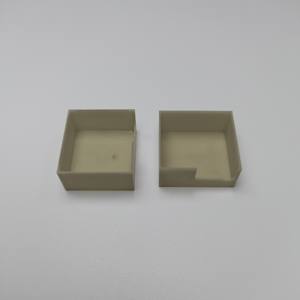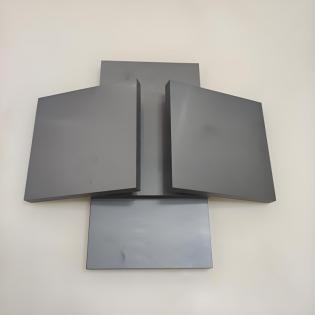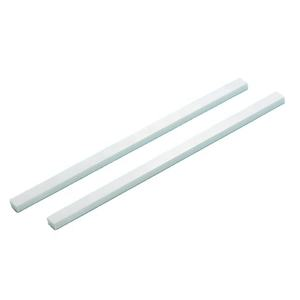Discover Premium Ceramic Products | Durability & Elegance United | Advanced Ceramics
1. Introduction
In the past 48 hours, a surge in industrial demand for high-performance refractory materials has spotlighted silicon carbide crucibles, especially amid global supply chain adjustments affecting the high purity silicon nitride powder market. Foundries and labs are increasingly turning to silicon carbide for its unmatched thermal shock resistance and durability.

Whether you’re melting metals, conducting lab experiments, or working in ceramics production, knowing how to properly use and care for your silicon carbide crucible is essential. This guide gives you actionable, step-by-step instructions to avoid cracking, contamination, and premature failure.
2. Understanding Your Silicon Carbide Crucible
A silicon carbide crucible is made from high-density silicon carbide ceramic, engineered to withstand temperatures exceeding 1600°C (2912°F). Unlike traditional clay-graphite crucibles, silicon carbide offers superior thermal conductivity and oxidation resistance.
Don’t confuse it with a silicon nitride crucible—though both are advanced ceramics, silicon nitride excels in mechanical strength and creep resistance, while silicon carbide shines in thermal performance. If you’re sourcing from a silicon nitride crucible factory, ensure you’re getting the right material for your application.
3. Step-by-Step Guide to Using a Silicon Carbide Crucible
3.1. Pre-Use Inspection
Before first use, inspect your silicon carbide crucible for cracks, chips, or surface defects. Even hairline fractures can lead to catastrophic failure under heat.
- Check the interior and exterior surfaces.
- Ensure the crucible sits evenly in its holder or furnace.

3.2. Proper Preheating
Never place a cold silicon carbide crucible directly into a hot furnace. Thermal shock is the #1 cause of breakage.
- Start at 200–300°C (392–572°F) for 30 minutes.
- Gradually increase temperature in 200°C increments until you reach your target.
- Allow at least 1–2 hours for full preheating, depending on crucible size.
3.3. Loading and Melting
Load materials gently to avoid impact damage. Avoid overfilling—keep contents below 80% capacity.
- Use clean, dry charge materials to prevent steam explosions.
- Never add cold or wet material to a hot crucible.
- Stir gently with silicon carbide or graphite tools—never metal.
3.4. Cooling and Unloading

After use, allow the crucible to cool slowly inside the furnace with the power off.
- Rapid cooling causes stress fractures.
- Once below 200°C, remove carefully using tongs designed for high-temp ceramics.
4. Common Problems and Solutions
4.1. Cracking or Spalling
This usually results from improper preheating or thermal shock. Always follow gradual heating protocols.
4.2. Glaze Buildup or Slag Adhesion
Residue from repeated melts can stick to the inner wall. Clean with a soft brush while warm—but never use water on a hot crucible.
4.3. Reduced Lifespan
Using incompatible fluxes or overheating beyond 1650°C can degrade the silicon carbide matrix. Stick to recommended operating limits.
5. Maintenance and Storage Tips
Store your silicon carbide crucible in a dry, room-temperature environment. Moisture absorption can lead to steam pressure buildup during reheating.
- Keep it on a clean, non-metallic shelf.
- Cover with a breathable cloth to prevent dust accumulation.
- Never stack crucibles—this can cause microfractures.
6. Silicon Carbide vs. Other Ceramics: Quick Comparisons
You might wonder how silicon carbide stacks up against alternatives like boron carbide or silicon nitride.
Boron carbide vs silicon carbide: Boron carbide is harder but more brittle and expensive—ideal for armor, not crucibles.
Silicon nitride ceramic components—like silicon nitride rings, plates, or custom silicon nitride heat shields—are better for structural applications under load, but less conductive than silicon carbide.
For dinnerware or kitchen use, note that items like silicon carbide ceramic baking dishes, silicon carbide ceramic dinner plates, or silicon carbide ceramic serving bowls are typically decorative or specialty cookware—not the same as industrial crucibles. Don’t confuse lab-grade silicon carbide with consumer ceramic dishes like silicon carbide baking dish staub or silicon carbide ceramic butter dish with lid.
Similarly, industrial forms like rbsic silicon carbide tile blocks, silicon carbide ceramic columns, silicon carbide burner nozzles, silicon carbide bricks, or silicon carbide tubes (including silicon carbide thermocouple protection tubes and silicon carbide ceramic tubes for high temperature) serve entirely different purposes than crucibles—but all leverage the same core material advantages.
7. Conclusion
A silicon carbide crucible is a powerful tool when used correctly. By following proper preheating, handling, and cooling procedures, you’ll extend its life and ensure consistent performance. Remember: it’s not just about the material—it’s how you treat it. Whether you’re in metallurgy, research, or advanced ceramics manufacturing, respecting these best practices will save time, money, and frustration.
Our Website founded on October 17, 2012, is a high-tech enterprise committed to the research and development, production, processing, sales and technical services of ceramic relative materials such as How. Our products includes but not limited to Boron Carbide Ceramic Products, Boron Nitride Ceramic Products, Silicon Carbide Ceramic Products, Silicon Nitride Ceramic Products, Zirconium Dioxide Ceramic Products, etc. If you are interested, please feel free to contact us.
